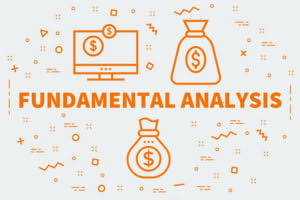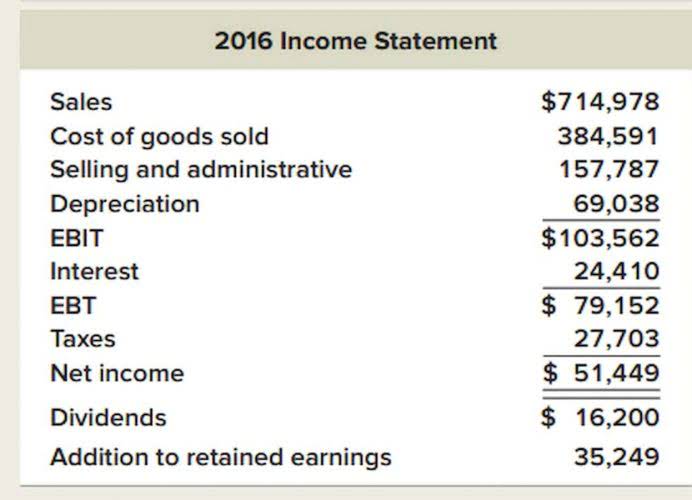Capital Expenditure CapEx Definition, Example, Formula
Capex can be calculated from a balance sheet or a company's cash flow statement. Capex is investment in and purchases of assets that affect a business's long-term growth and prospects. These expenditures include the purchase of other companies, real estate and equipment. Growth CapEx is calculated by evaluating the capital expenditures made to support the growth of the business, such as investments in new projects, expansions, or acquisitions. Hence, if growth capex is expected to decline and the percentage of maintenance capex increases, the company’s revenue should decrease from the reduction in reinvesting. Monitoring existing assets - Regularly assessing the performance and condition of existing assets ensures that CAPEX investments are both completely strategic and necessary.
This can sometimes mean that investment in new infrastructure and what is capital expenditure other capital expenditure projects must be put on hold while aging tech is replaced or updated to comply with new legislation. This is especially true when it comes to capital expenses that are broad reaching. It may be hard, for example, to calculate the true ROI of investing in new machinery if there is no tangible impact on output or efficiency.
Capital expenditures are often difficult to reverse without the company incurring losses. Most forms of capital equipment are customized to meet specific company requirements and needs. The purchase of a building, by contrast, would provide a benefit of more than 1 year and would thus be deemed a capital expenditure. This is treated differently than OpEx, such as the cost to fill up the vehicle's gas tank. The tank of gas has a much shorter useful life to the company so it's expensed immediately and treated as OpEx. The property, plant, and equipment balance is reduced by its accumulated depreciation balance.
Here, Capex refers to capital expenditures, and ΔPP&E refers to the change in the value of property, plant and equipment. Basically, the cash leaves your account now to pay for the capital expense, but since it’s a long-term investment, your business won’t be reaping the benefits of those expenses for some time to come. Capital expenditure is recorded as an asset on the balance sheet, and the value of the asset is depreciated over time and expensed to the income statement. Capital expenditure is critical for businesses that wish to invest in long-term growth, drive future revenue increases, and maintain a competitive edge. A purchase can be considered a capital expenditure if it's a long-term investment where the goods being purchased are expected to provide benefits to the business lasting over a year.
The Difference Between CapEx and OpEx
- Capital expenditure projects are usually large, complex, and long-term, and they require a careful analysis of their costs and benefits.
- You need to spend maintenance CapEx to keep assets in good working order and extend their useful lives, which can help you avoid more significant expenses in the future.
- As mentioned earlier, depreciation is the systematic allocation of the cost of an asset over its useful life.
- In conclusion, effective management of CapEx is crucial for driving business growth and maintaining competitive advantage.
For example, a manufacturing company might spend on new production lines to increase capacity or upgrade older equipment in order to improve efficiency. A retail business could invest in constructing a new store or renovating an existing one to attract more customers. Tangible CAPEX can help with daily operations and also acts as a foundation for long-term growth and gives the company a competitive advantage.
Combining the current depreciation expense with the change in plant, property, and equipment (PP&E) from the previous accounting period will yield the capital expenditures that appear in the cash flow statement. Capital expenditure, or CAPEX, is the money that a business spends on acquiring, maintaining, or improving its fixed assets, such as buildings, equipment, machinery, vehicles, or software. CAPEX is different from operating expenses, or OPEX, which are the ongoing costs of running a business, such as salaries, utilities, rent, or marketing. CAPEX is considered an investment in the future of the business, as it can increase its productive capacity, efficiency, quality, or competitiveness.
A capital expenditure is recorded as an asset, rather than charging it immediately to expense. It is classified as a fixed asset, which is then charged to expense over the useful life of the asset, using depreciation. For example, if you acquire a $25,000 asset and expect it to have a useful life of five years, then charge $5,000 to depreciation expense in each of the next five years. The asset is initially recorded in the balance sheet, while the periodic depreciation charges against it appear in the income statement.
For example, when a company purchases a new factory, its cost is added to the balance sheet, increasing the value of PP&E. Over the asset’s useful life, its value is slowly reclassified as depreciation expense, showing its wear and tear or because it becomes obsolete. OpEx– operational expenses– are short-term expenses required to meet the needs of a company’s day-to-day operations. Unlike capital expenditures, operational expenses do not add ongoing value or extend the life of existing assets.
If a project or asset faces competition or disruption, the ROI should be calculated using different market share and innovation assumptions. By performing a sensitivity analysis, the company can identify the best-case, worst-case, and most likely scenarios, and assess the probability and impact of each scenario. This can help the company to make more informed and robust decisions, and to prepare for contingencies and opportunities. Financing sources can include internal funds, such as retained earnings or depreciation, or external funds, such as debt or equity. Each source has its own advantages and disadvantages, such as interest rates, tax implications, ownership dilution, or repayment terms. Therefore, it is important to consider the optimal capital structure and the weighted average cost of capital (WACC) of the business when budgeting for capex.
Budgeting and forecasting
- A company could include $100,000 of depreciation expense each year for 10 years if it purchases a $1 million piece of equipment with a useful life of 10 years.
- Money spent repairing and maintaining existing equipment is not considered a capital expenditure.
- By making informed decisions about CapEx investments, you can minimize the risk.
- The company had an existing capacity of 500 MT. However, the market demand for cement has grown significantly due to the country's increasing infrastructure and real estate activities.
CapEx investments are typically long-term commitments, so it’s important to consider their impact over time. Look at collaborating with trusted advisors and experts who can provide guidance and support throughout the CapEx investment process. Measuring the effectiveness of CapEx investments can be difficult, particularly regarding long-term and indirect benefits such as improved productivity or customer satisfaction. CapEx investments can impact OpEx in the long run by improving the efficiency and productivity of your operations. OpEx are distinct from CapEx investments that have long-term value and are not consumed or used up in day-to-day operations. For example, investing in intangible CapEx assets through marketing and advertising campaigns can help you build brand recognition and loyalty, increasing the perceived value of your products or services.
Growth capital expenditures and revenue growth are closely tied, as along with working capital requirements, capex is grouped together as “reinvestments” that help drive growth. Hence, the depreciation expense is treated as an add-back in the cash from operations (CFO) section of the cash flow statement (CFS) to reflect that no real cash outlay occurred. The increase in the production capacity of the entity is not a basis for classifying the amount spent on setting up the production unit as capital expenditure. In the above example, even if the production capacity remained constant and the new unit brought efficiency in production or helped reduce the factory's waste, it would still classify as a capital expenditure. The company had an existing capacity of 500 MT. However, the market demand for cement has grown significantly due to the country's increasing infrastructure and real estate activities. Given the increased market demand, ABC Ltd. decided to set up a new production unit in the same vicinity as the existing unit.
The difference between capital expenditure (Capex) and operating expenses (Opex) is as follows. As companies grow and evolve, they may allocate capital expenditure across each category according to their business objectives. By understanding the purpose of capital expenditure, companies can make informed decisions about where to allocate capital to achieve their financial and strategic goals.
By reviewing and learning from capex outcomes, a business can improve its capex management skills and capabilities, and enhance its decision-making and performance. Remember, creating a capital expenditure budget requires careful planning, analysis, and consideration of the business's specific needs and goals. By following these steps and continuously monitoring and adjusting the budget, businesses can make informed investment decisions and ensure the effective utilization of resources.
Accordingly, businesses seek to benefit themselves and/or their shareholders by maximizing profit. While both capital expenditure and operational expenditure involve spending money, there are key differences between the two. Examples of capital expenditure include purchasing a new manufacturing plant, renovating office space, buying machinery, or developing software for internal use. Capex is an important aspect of any business, as it can affect its growth, performance, and value. Therefore, it is essential for a business to understand the concept, benefits, challenges, and methods of capex, and to plan and budget for it wisely and effectively. The cash goes out of your account when you buy the asset, but you’re only able to offset that against your income using the depreciation vehicle, which happens gradually over the period of the asset’s useful life.

















